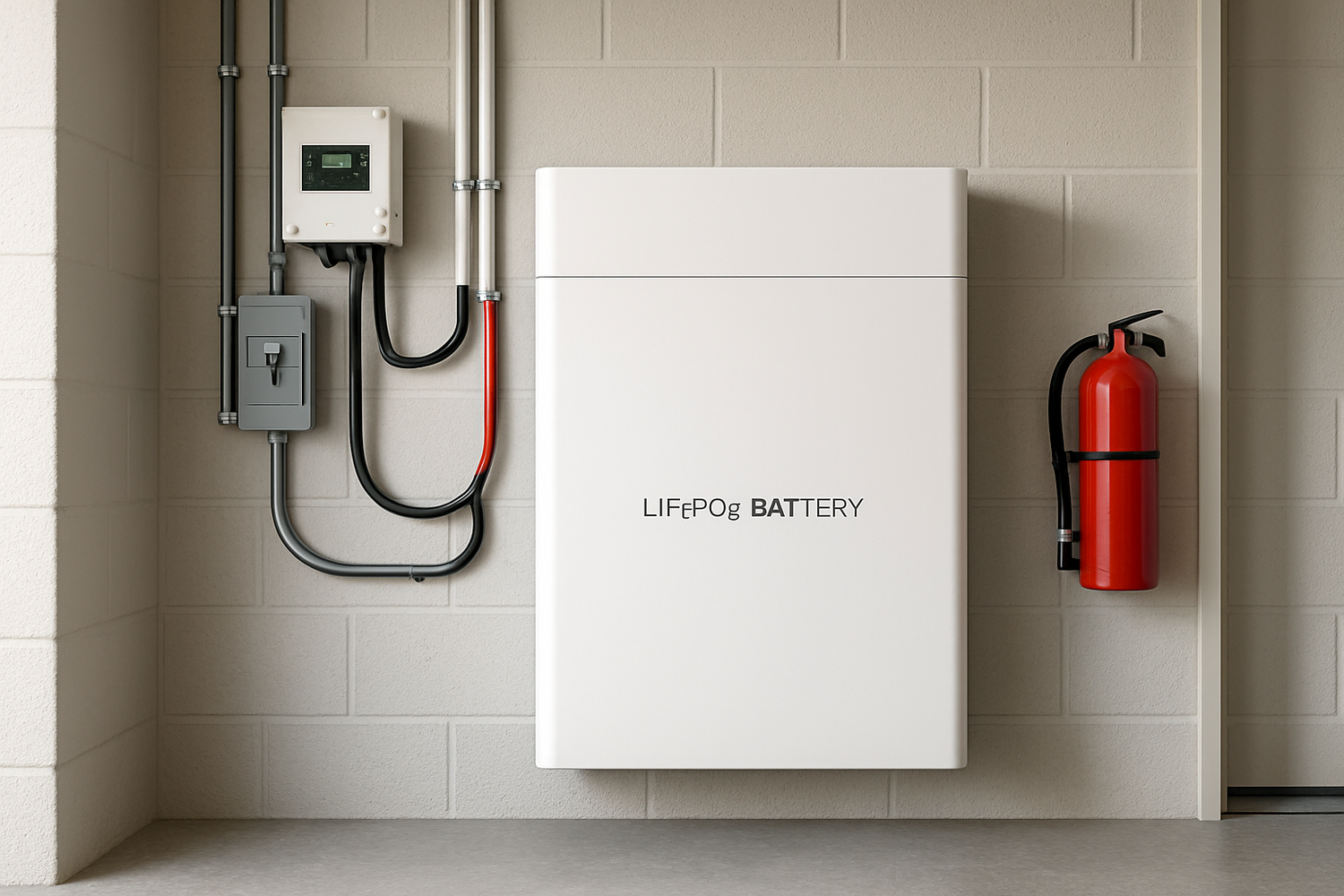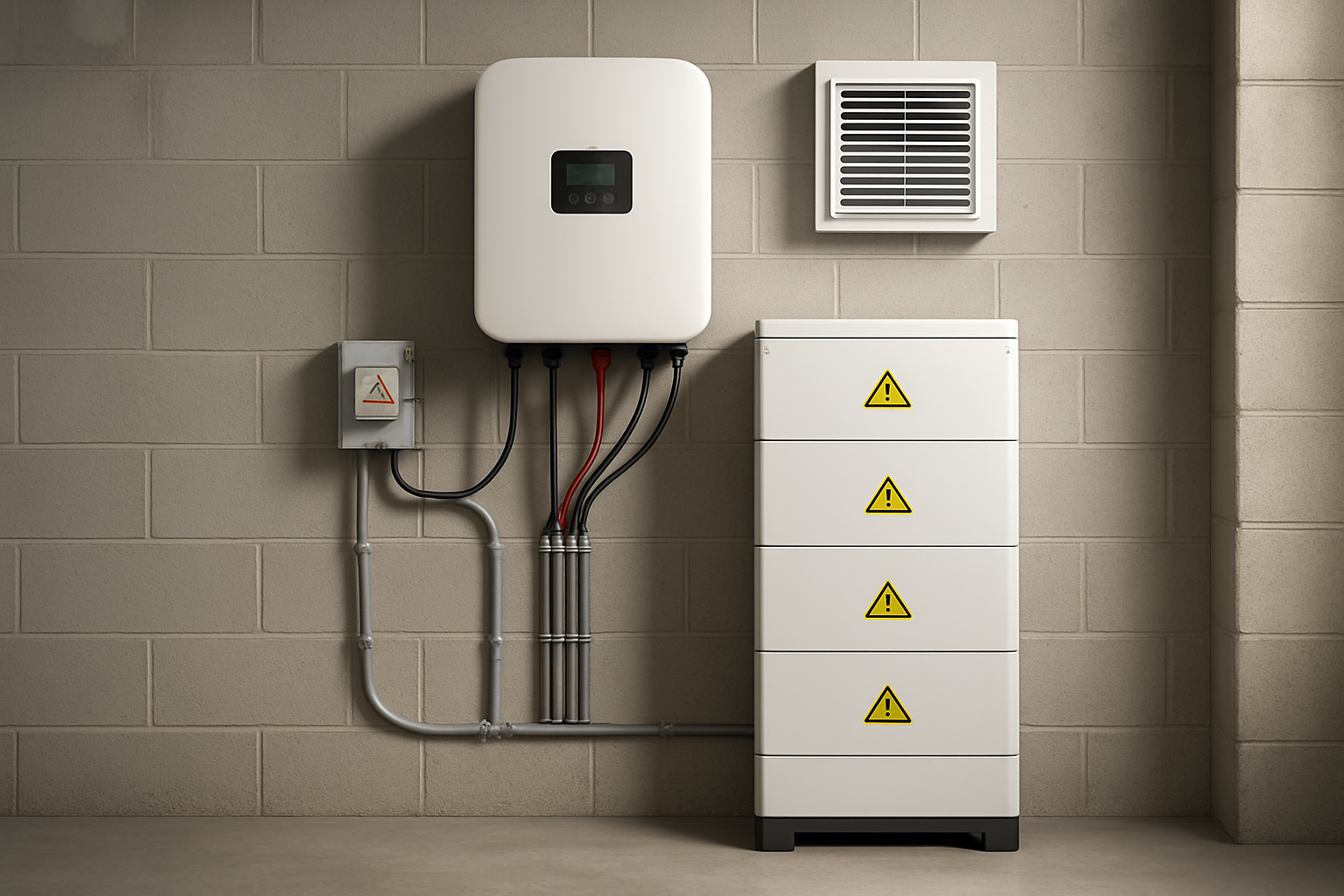Lithium battery storage is a cornerstone of modern energy independence, offering a reliable way to power homes and businesses. With this powerful technology comes a responsibility to handle it safely. While incidents are uncommon, a systematic approach to fire safety is crucial for protecting your investment and property. This checklist provides clear, actionable steps for safe lithium-ion battery storage, from initial selection to long-term maintenance.
Foundational Safety: The Right Battery and System Design
Safety begins long before the system is installed. The components you choose and the way they are designed to work together form the bedrock of a secure energy storage solution. Making informed decisions at this stage is the most effective form of battery fire prevention.
Choosing the Right Chemistry: LiFePO4 as the Safer Option
Not all lithium-ion batteries are created equal. Lithium Iron Phosphate (LiFePO4) chemistry is recognized for its superior thermal and chemical stability compared to other chemistries like Nickel Manganese Cobalt (NMC). According to a report by the International Renewable Energy Agency, Renewable Power Generation Costs in 2024, LFP chemistry offers distinct safety advantages. Its strong molecular bonds make it far less prone to thermal runaway, a condition where a battery enters an uncontrollable, self-heating state. This inherent stability makes LiFePO4 batteries, such as a 12v 100ah LiFePO4 lithium battery, a preferred choice for residential and commercial energy storage where safety is paramount.
The Role of a Quality Battery Management System (BMS)
A Battery Management System (BMS) is the brain of your battery pack. This electronic system continuously monitors cell voltage, current, and temperature. Its primary function is to prevent operations outside of a safe range. A high-quality BMS will automatically disconnect the battery to prevent overcharging, over-discharging, short circuits, or overheating. This active protection is a critical defense against conditions that could lead to a fire.
Insist on Certified Components
Always select energy storage systems that have been tested and certified by recognized organizations. Certifications like UL 9540 are comprehensive standards that cover the entire system, including the battery, inverter, and control systems. This certification ensures the components have undergone rigorous safety testing and are designed to work together safely, providing a verified layer of protection.
The Installation Checklist: Getting It Right from Day One
Proper installation is one of the most critical factors in ensuring the long-term safety of your lithium battery storage system. A flawed installation can undermine the safety features built into the best equipment.
Proper Location and Spacing
The placement of your battery system matters. Follow these safe storage guidelines for batteries:
- Install the system in a location with adequate clearance on all sides for airflow and maintenance access.
- Choose a dry, protected space like a garage or utility room, away from primary living areas.
- Keep the battery system clear of flammable or combustible materials, such as gasoline, paint thinners, or paper products.
- Ensure the mounting surface is sturdy enough to support the weight of the unit without strain.
Ensuring Adequate Ventilation
Heat is a byproduct of battery operation. Proper ventilation is essential to dissipate this heat and maintain a safe operating temperature. As noted in multiple IEA reports, including The Role of Critical Minerals in Clean Energy Transitions, well-defined safety standards and appropriate ventilation are required to ensure safe operations with advanced energy technologies. Poor ventilation can trap heat, increasing the internal temperature of the battery and potentially triggering a fault.
Correct Wiring and Connections
Faulty wiring is a significant fire hazard. All electrical connections must be secure and correctly sized for the system's voltage and current.
- Use the wire gauge specified by the manufacturer. Undersized wires can overheat under load.
- Ensure all terminal connections are torqued to the manufacturer's specifications. Loose connections can create electrical arcs and excessive heat.
- Hiring a qualified and certified professional for installation is the best way to guarantee that all electrical work meets safety codes and standards.
The Operational and Maintenance Checklist: Ongoing Vigilance
Safety does not end after installation. Regular checks and mindful operation are key to maintaining a secure system for years to come.
Regular Visual Inspections
Perform a quick visual check of your system monthly. Look for:
- Any signs of physical damage, such as cracks, dents, or swelling in the battery case.
- Corrosion on the terminals or connection points.
- Frayed or damaged wiring.
- An accumulation of dust or debris on or around the unit, which can impede airflow.
Monitoring System Performance
Modern energy storage solutions come with monitoring software that provides valuable insights into system health. Pay attention to the data. Sudden changes in charging behavior, capacity, or operating temperature can be early indicators of a developing issue. Understanding these metrics is key, and a detailed analysis of solar storage performance provides a deeper reference for what to look for. Consistent performance is a sign of a healthy system.
Maintaining a Safe Operating Environment
Control the environment around your battery. Keep the ambient temperature within the manufacturer's recommended operating range. Avoid placing the unit in direct sunlight or near sources of heat. The International Energy Agency's Southeast Asia Energy Outlook 2024 highlights that battery storage is crucial for grid stability, and ensuring its reliable operation includes maintaining optimal environmental conditions.
The Emergency Preparedness Checklist: What to Do If Something Goes Wrong
In the unlikely event of a problem, being prepared can make all the difference. A clear plan helps ensure a swift and safe response.
Installing Smoke and Heat Detectors
Install smoke and heat detectors in the room where your battery system is located. For best results, use interconnected alarms that will alert you no matter where you are in the building. This provides the earliest possible warning of a potential issue.
Having the Right Fire Extinguisher
Water is ineffective against lithium-ion battery fires and can make the situation worse. You need a specific type of fire extinguisher. Keep a Class ABC or, ideally, a Class D dry powder fire extinguisher located near the battery system. Ensure you and others in the building know how to use it.
Creating a Clear Emergency Plan
Establish a simple emergency protocol. If you suspect a problem (e.g., you see smoke or smell a strange chemical odor), your plan should be:
- If it is safe to do so, activate the system's emergency shutdown procedure.
- Evacuate the area immediately. Do not attempt to diagnose the problem up close.
- Call your local fire department. When they arrive, inform them that a lithium-ion battery is involved, as this requires a specific firefighting approach.
A Proactive Approach to Long-Term Safety
Achieving energy independence with a lithium battery storage system is a significant step forward. Ensuring its safety is an ongoing commitment, not just a one-time task. By following this comprehensive fire safety checklist—from selecting LiFePO4 technology and certified systems to ensuring professional installation and performing regular maintenance—you can confidently and securely manage your energy resources. A proactive and informed approach is the best way to enjoy the benefits of your system for its entire lifespan.
Frequently Asked Questions
Can I install a lithium battery storage system myself?
While some smaller systems are designed for DIY, it is highly recommended to have a certified professional install any home energy storage system. Proper installation is critical for safety and performance, preventing issues like incorrect wiring or inadequate ventilation.
How often should I inspect my battery system?
A monthly visual inspection is a good practice. Check for any signs of damage, loose connections, or debris around the unit. Also, regularly monitor the system's performance data through its monitoring software for any anomalies.
What are the first warning signs of a battery problem?
Warning signs can include unusual noises (hissing, popping), a strange smell, the battery casing swelling or deforming, or the unit feeling excessively hot to the touch. If you notice any of these, shut down the system according to the manufacturer's instructions and contact your installer immediately.
Is it safe to store lithium batteries in a hot garage?
Lithium batteries should be stored within the temperature range specified by the manufacturer. A very hot garage, especially one with poor ventilation, can degrade the battery's health and increase safety risks. Ensure the location provides adequate cooling and is shielded from direct sunlight.





Leave a comment
All comments are moderated before being published.
This site is protected by hCaptcha and the hCaptcha Privacy Policy and Terms of Service apply.